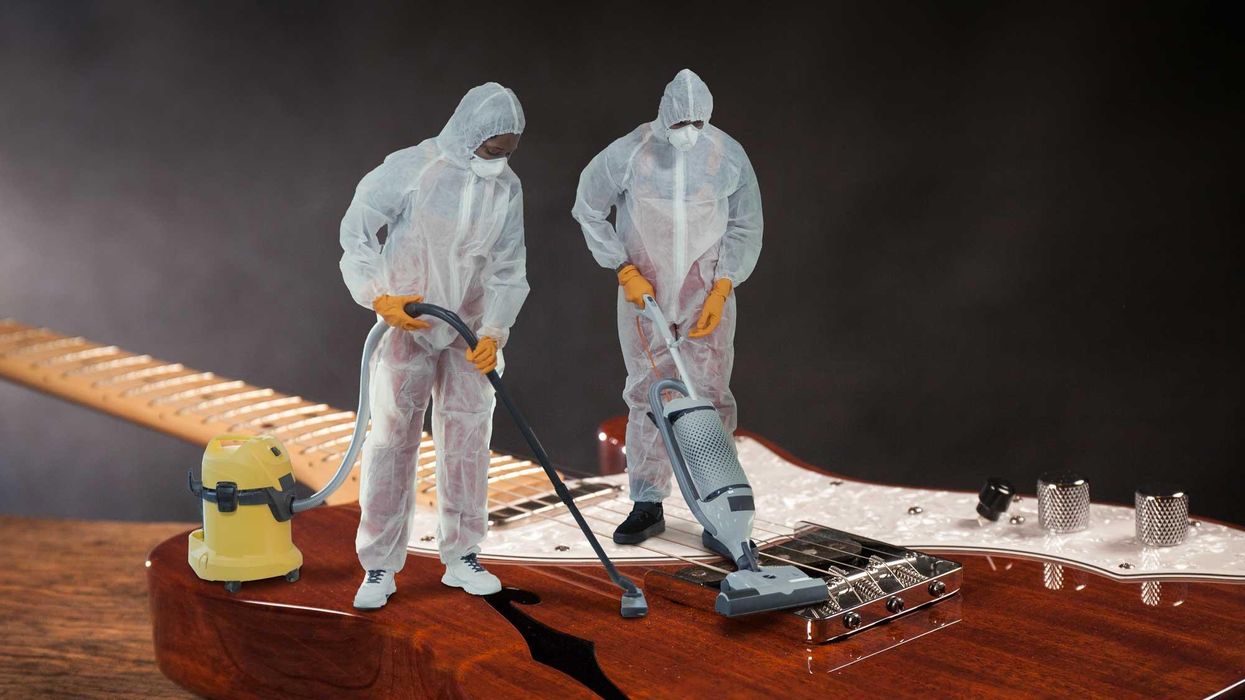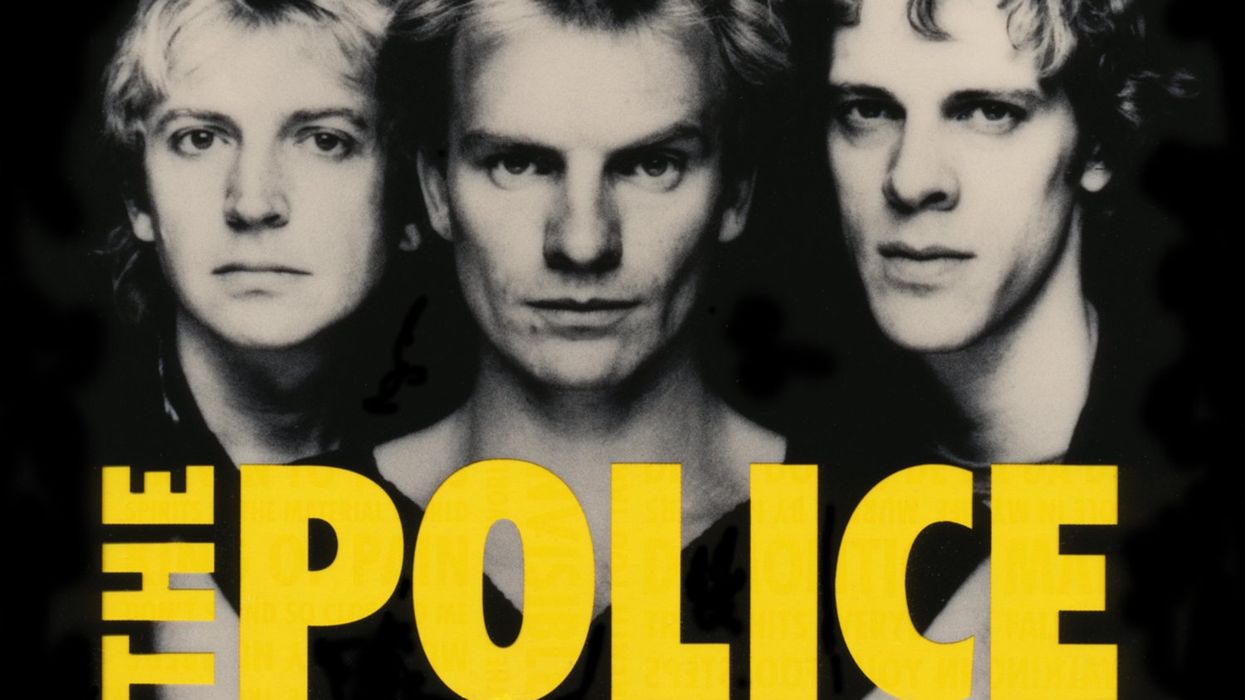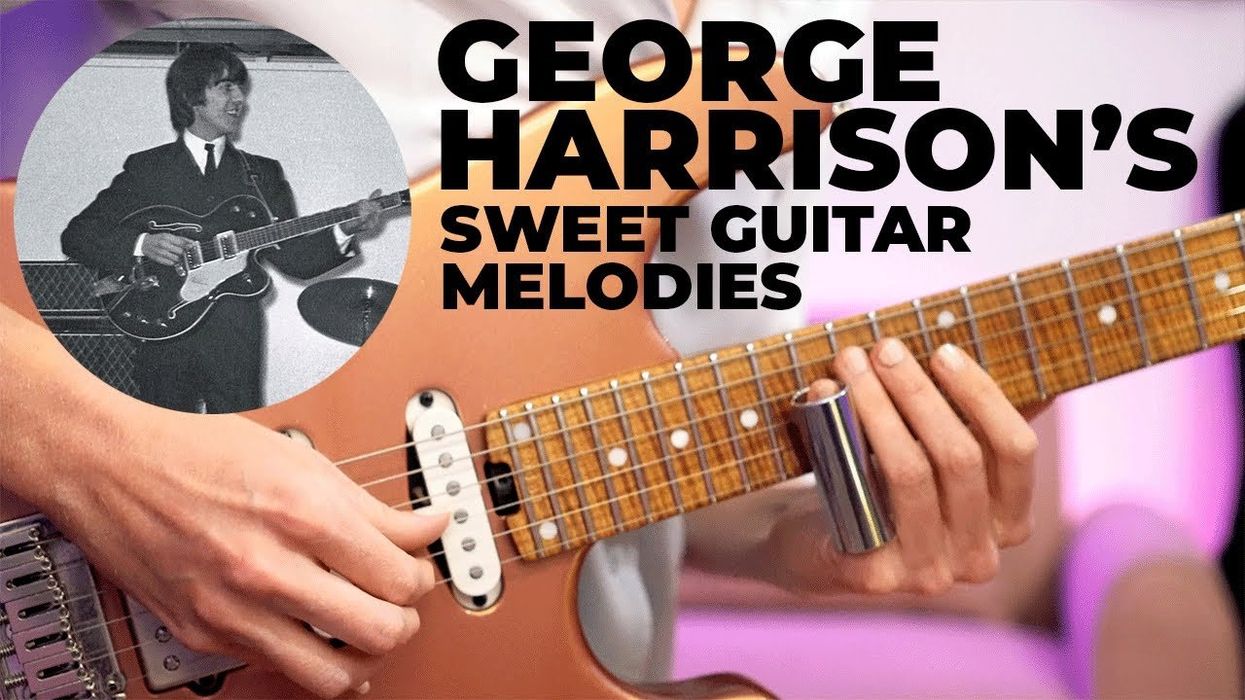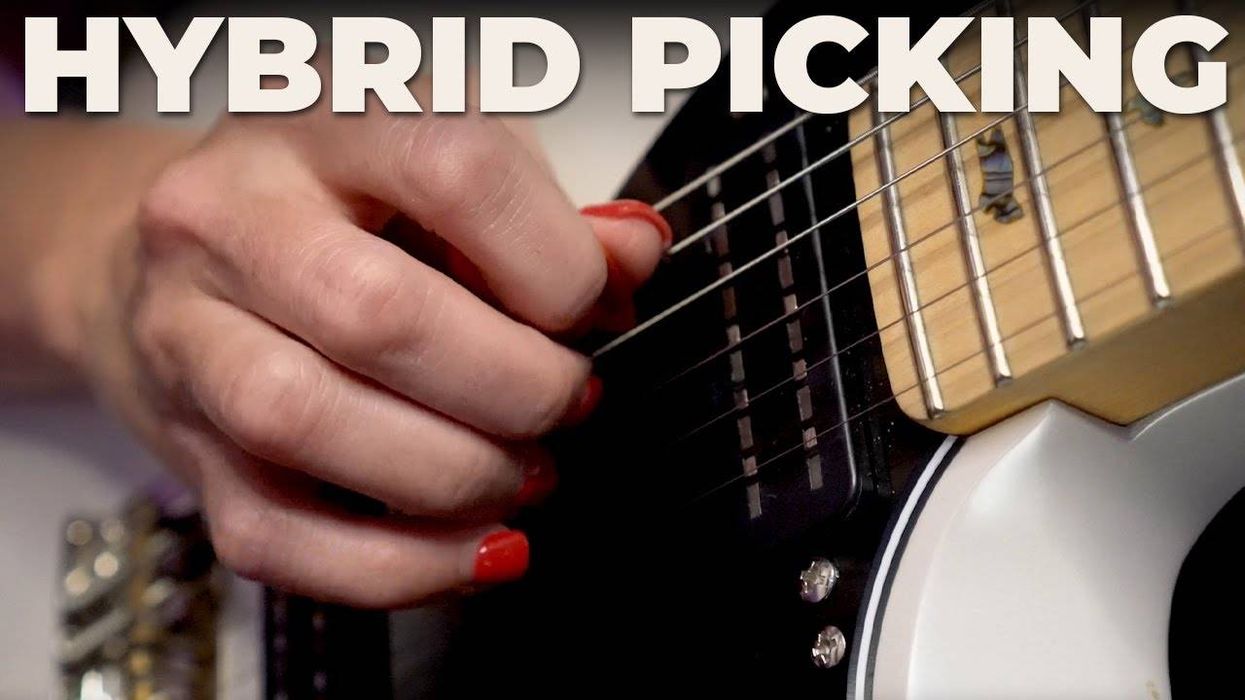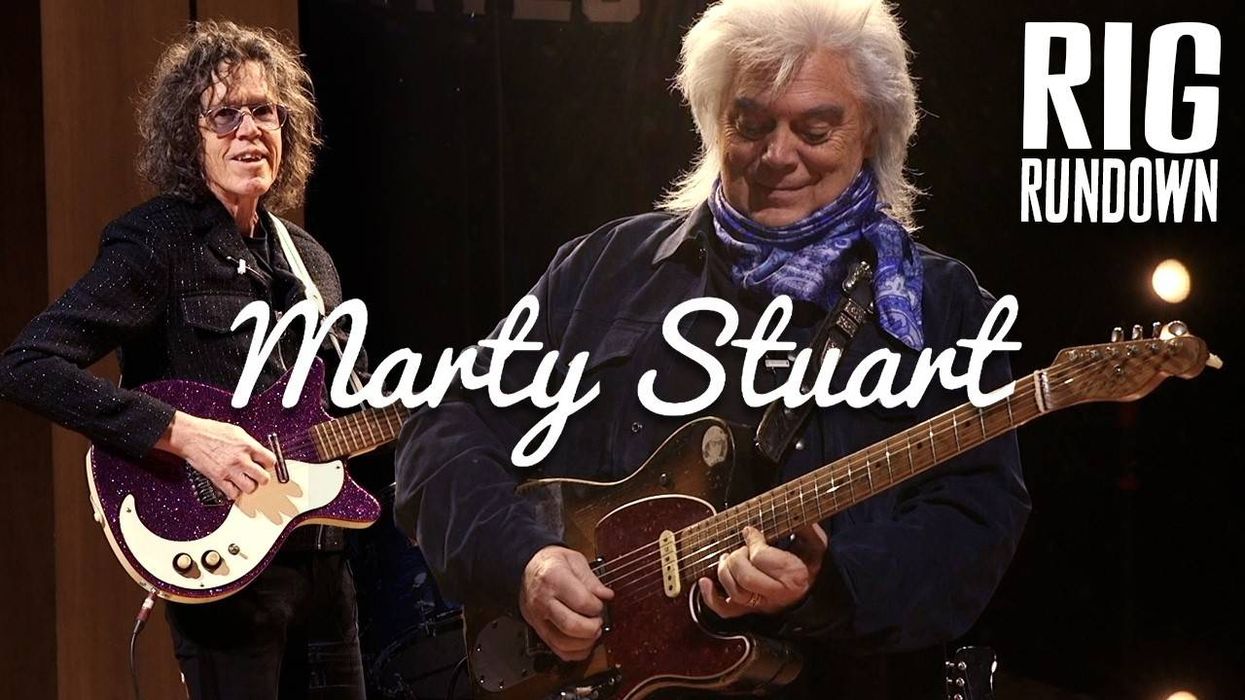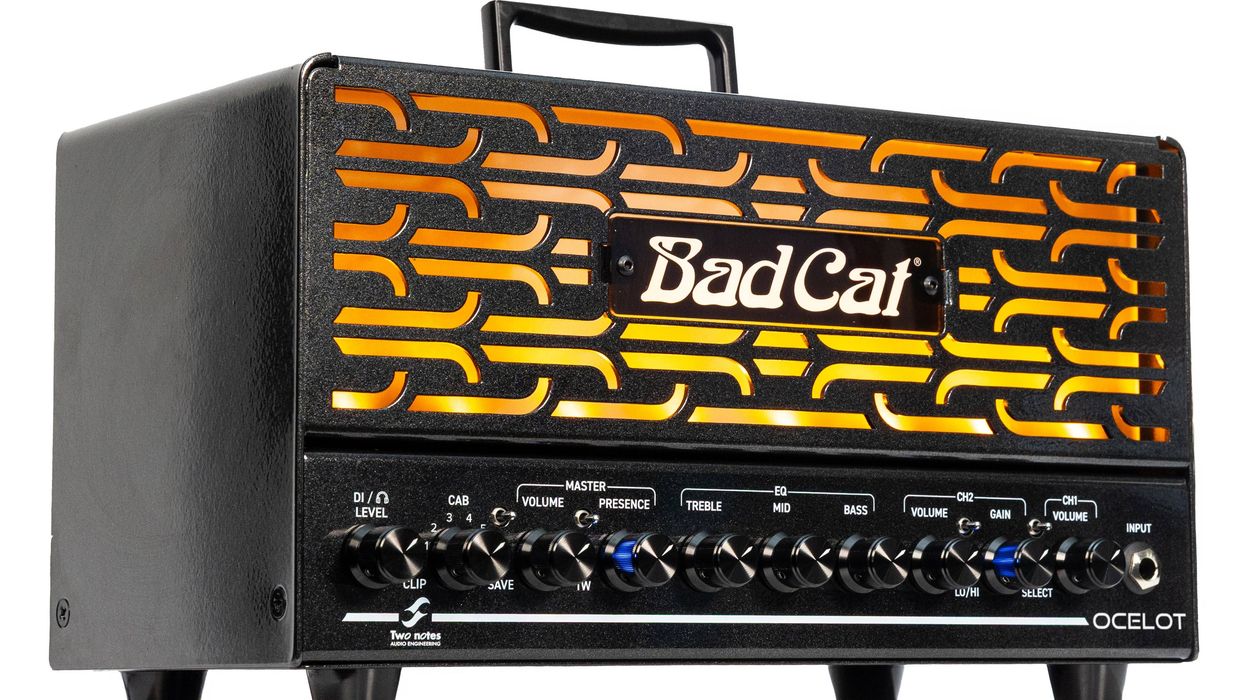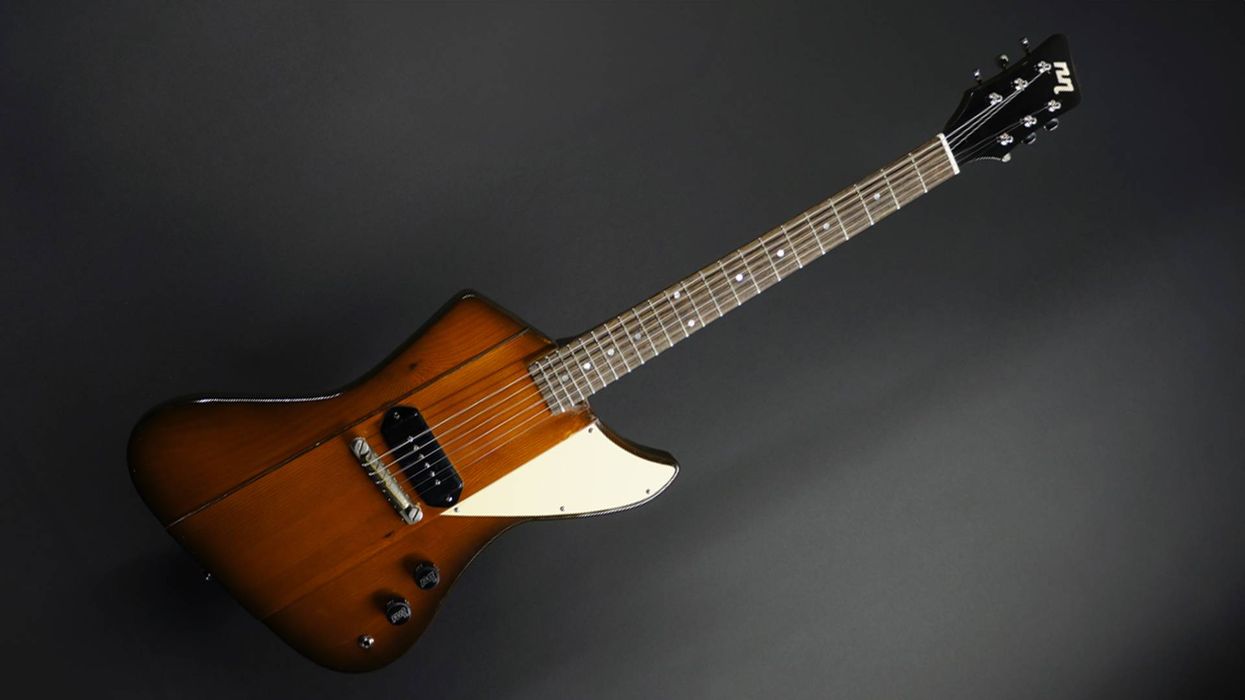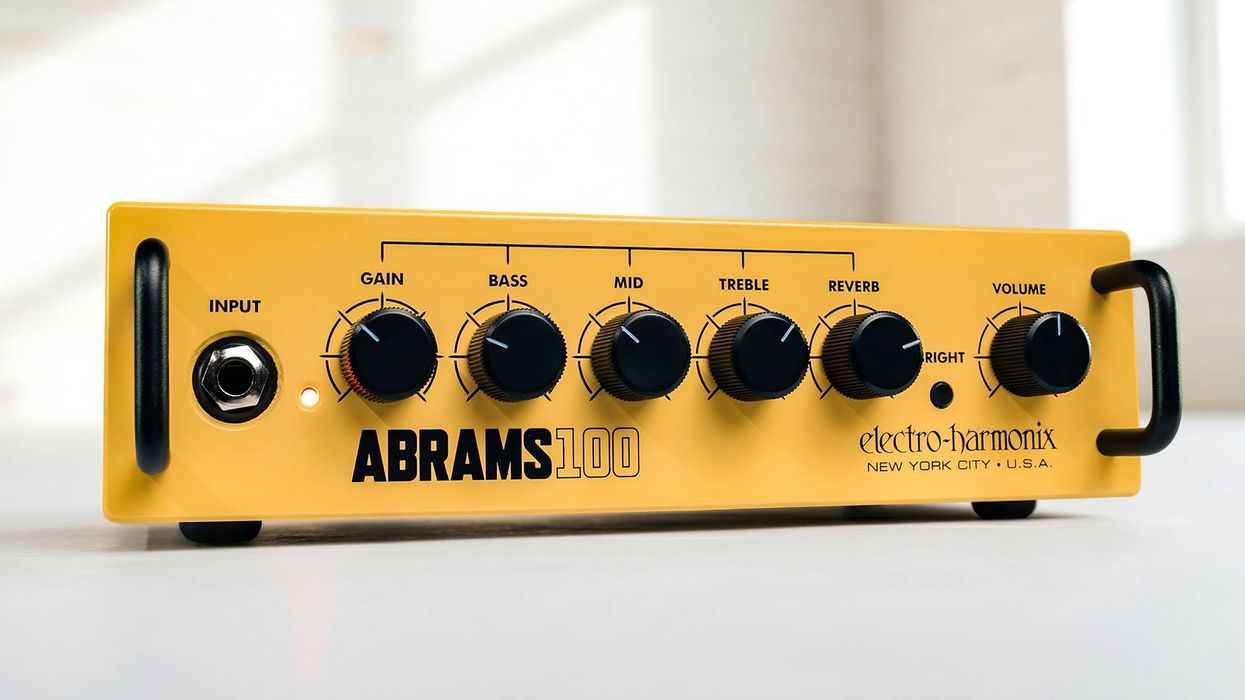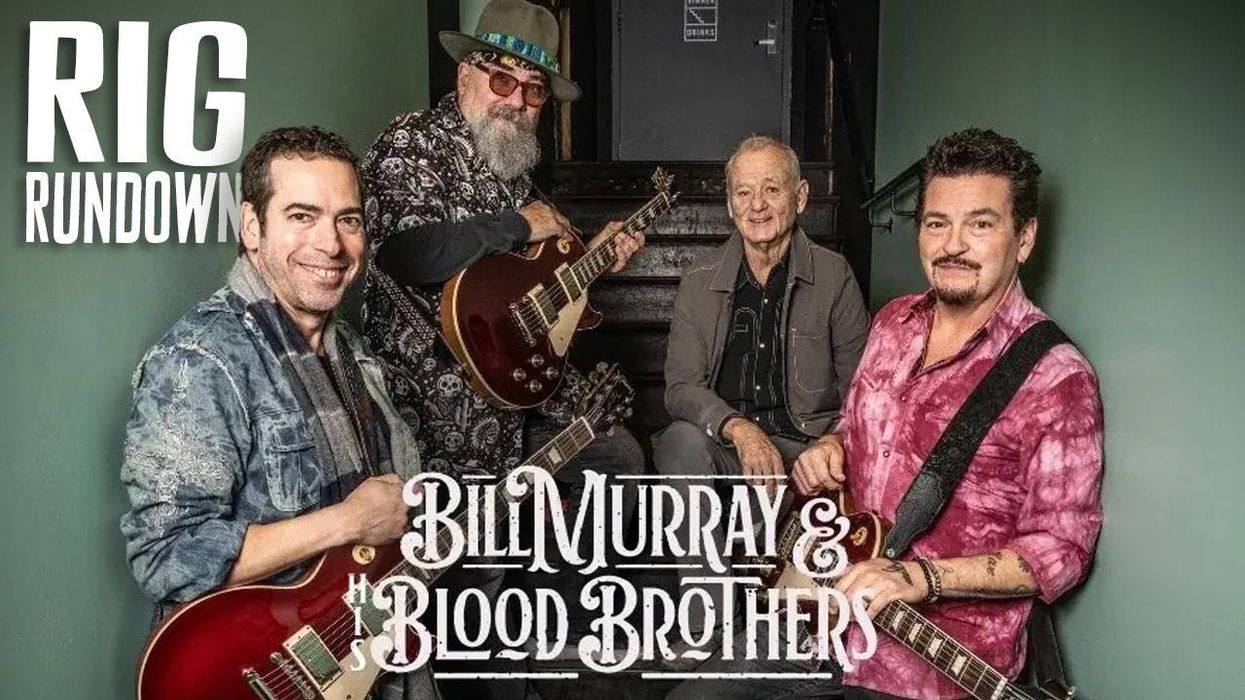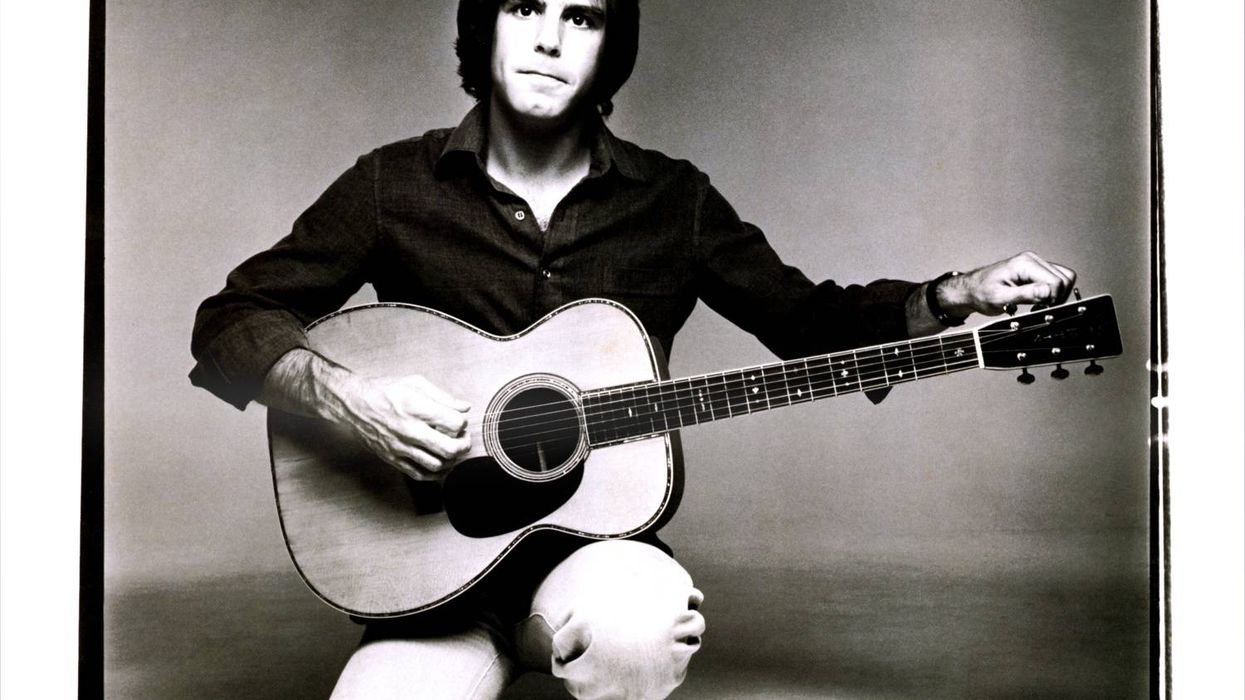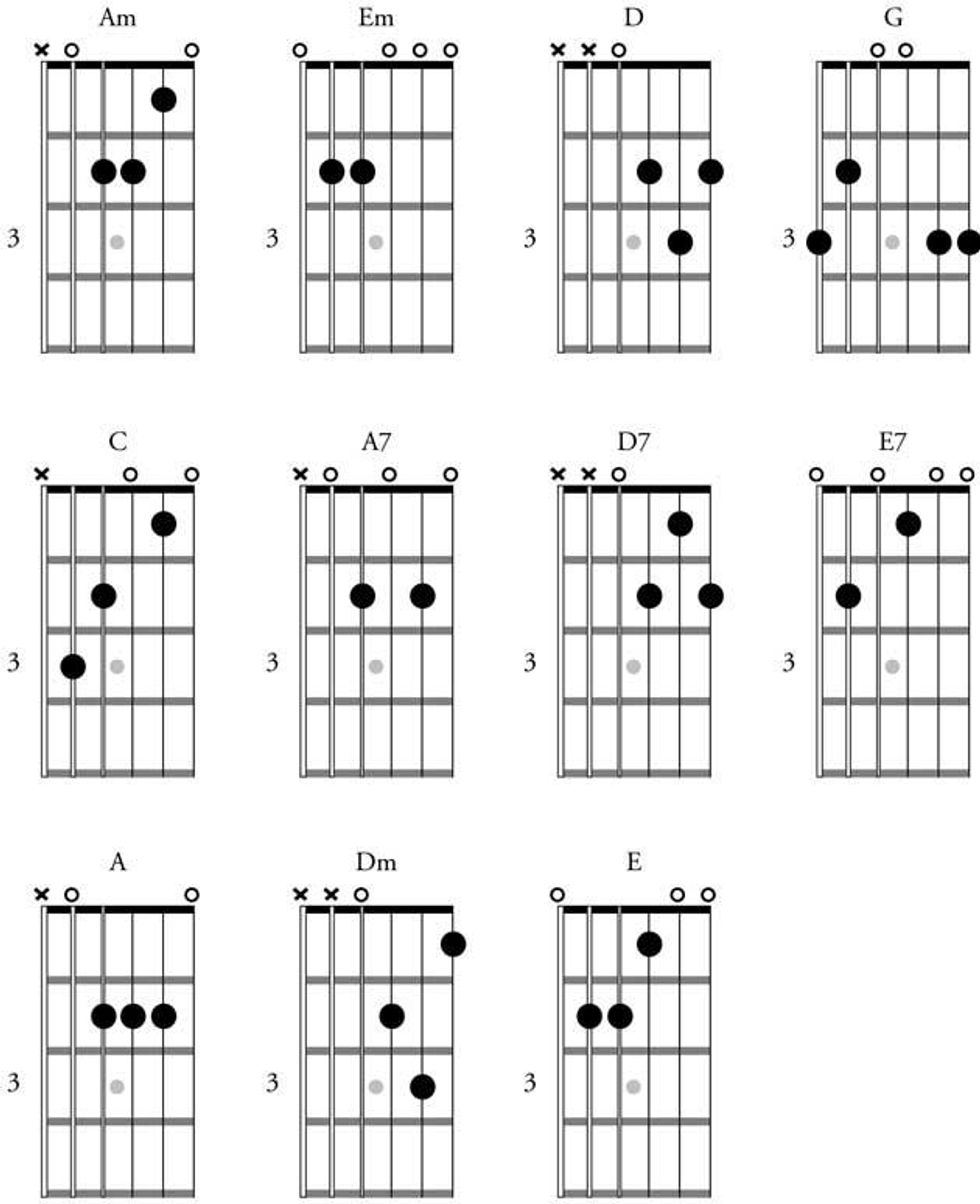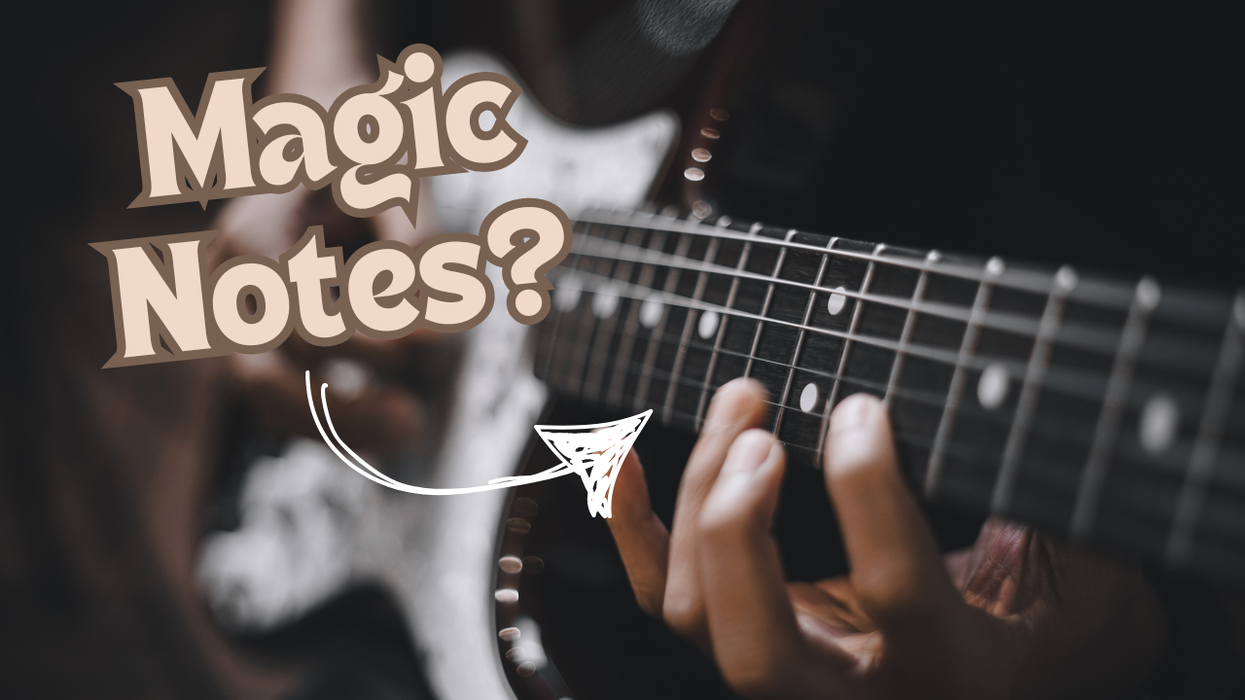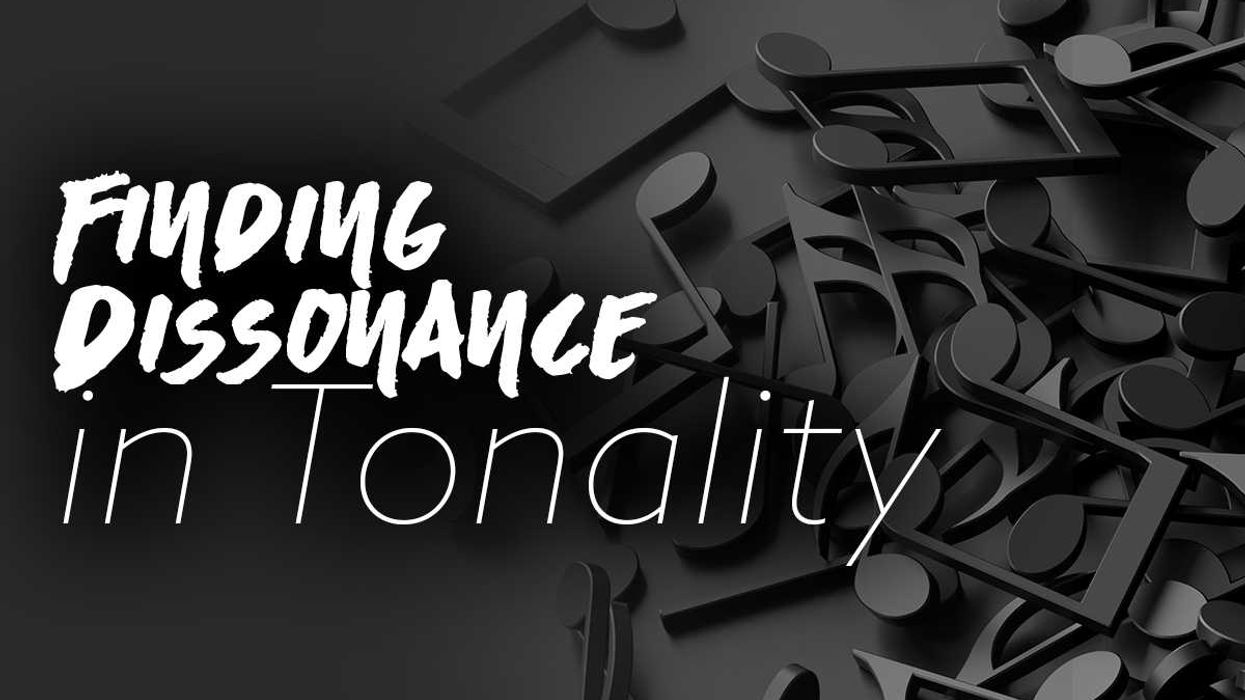Chops: Advanced
Theory: Intermediate
Lesson Overview:
• Learn how to play extended arpeggios.
• Unlock the secrets of single-finger tapping.
• Create exciting licks using string skipping, four-note-per-string fingerings, and wide intervals.
Click here to download a printable PDF of this lesson's notation.
A big reason why tapping became so ubiquitous in the ’70s and ’80s was due to Eddie Van Halen’s groundbreaking instrumental, “Eruption.” Ask nearly any guitar player who came of age during that era and it’s likely they can describe exactly where they were when their ears were assaulted with EVH’s insanely fluid flurry of notes. From that moment, a new breed of guitar player was born. Joe Satriani, Steve Vai, Paul Gilbert, Reb Beach, Greg Howe, and George Lynch each took the inspiration they got from King Eddie and pushed their own technique to the limits. Guitarist T.J. Helmerich was a big proponent of eight-finger tapping. Check out the video below to get a taste of this mind-boggling technique.
In this lesson, I’ll walk you through 14 licks that cover many different approaches and styles. But before we dig into those, let’s review the physical process: A legato-based technique, tapping uses picking-hand hammer-ons to extend the range of conventionally fretted lines.
And tapping isn’t limited to single-note lines—it can also be used to produce chord progressions. For example, you can tap out a chord progression with your picking hand while your fretting hand plays a bass line. In the video below, Joe Satriani plays “Midnight” and demonstrates his unique approach to two-hand tapping.
Ex. 1 is based around the A Aeolian mode (A–B–C–D–E–F–G) and works great over an A minor groove. The trick here is to hold the bend while tapping notes up the string. Remember: Keep your bends in tune so the tapped notes will be in tune as well.
Click here for Ex. 1
Ex. 2 is a classic EVH-style tapping lick that’s based around three-note-per-string arpeggio patterns on the 1st string. As you play through the progression, notice how we’re using voice-leading to change only the most essential notes with as little movement as possible.
Click here for Ex. 2
The late, great Randy Rhoads inspired Ex. 3. It’s the same basic idea as before, but this time we are descending by a major third (A–F–Db–A) each time we shift chords.
Click here for Ex. 3
In Ex. 4 we combine two adjacent pentatonic shapes in the key of A minor. The fretting hand covers the basic pentatonic box at the 5th fret, while the tapping hand strikes notes found within the next box up the neck. The new wrinkle is that we are now using “hammer-ons from nowhere.” These are simply notes that are sounded by tapping with a fretting-hand finger.
Click here for Ex. 4
Our next tapping lick (Ex. 5) is based on something that Extreme’s Nuno Bettencourt might play. It demonstrates just how far patterns can be extended with two-handed tapping. We continue with our hammer-ons from nowhere each time we move to a new string.
Click here for Ex. 5
We stick with the key of A minor for Ex. 6, which is straight out of Greg Howe’s bag of tricks. This lick demonstrates how to work through three-note-per-string patterns with traditional tapping and hammer-ons from nowhere—one of Howe’s signature techniques.
Click here for Ex. 6
Ex. 7 is based on an idea from guitar ace Reb Beach. The work that Beach does in both Winger and Whitesnake offers a wealth of blistering tapping licks. In this example, we stay on the top two strings and move through the A minor pentatonic scale (A–C–D–E–G). Once you have the pattern down, try moving it to other strings.
Click here for Ex. 7
Reb Beach also inspired Ex. 8. The lick is a lengthy run in E Dorian (E–F#–G–A–B–C#–D) that’s based around a series of four-note-per-string patterns. This figure is quite difficult and there are a lot of notes, so try to minimize extraneous noise when crossing strings.
Click here for Ex. 8
We turn to the legendary Mr. Big axeman, Paul Gilbert, in Ex. 9. This is a long ascending phrase that flows smoothly through the E Aeolian mode (E–F#–G–A–B–C–D). It totally would fall in line with something you might hear Gilbert play on a Racer X album.
Click here for Ex. 9
Let’s take another look at something in the style of Greg Howe (Ex. 10). Howe often performs three-note-per-string runs using tapping, and here we work through the E Dorian mode again. Because the basic pattern is quite simple, it would be easy to move to other keys.
Click here for Ex. 10
We can hardly do a column on tapping without looking at one of the instrument’s all-time wizards, Steve Vai. I love Vai’s immense tapped runs, and Ex. 11 is a prime example of his fretwork. This lick uses the E Aeolian mode and covers nearly the entire fretboard. Try breaking down this lick into easy-to-digest segments before joining them together.
Click here for Ex. 11
One of the most underrated guitarists of the shred era was Todd Duane, and Ex. 12 is a demanding lick I copped from him. We’re using a four-note-per-string pattern along with some string skipping. This challenging lick is really potent when you work it up to speed.
Click here for Ex. 12
Ex. 13 is one of my favorite approaches to tapping arpeggios, and is similar to what underground shredder Darren Housholder might play. The big change here is that we’re playing groups of five, or quintuplets, with a double-tap technique. The first two measures outline an A major arpeggio, and the last two cover an F#m arpeggio.
Click here for Ex. 13
Our final lick (Ex. 14) comes from one of my own tunes called “The Nashville Song.” This phrase demonstrates how string skipping and tapping can be used on extended arpeggios. We’re moving between an F#m7 arpeggio in the first measure to an Amaj7 arpeggio in the second measure, and this combination creates a nice Fm9 sound.

